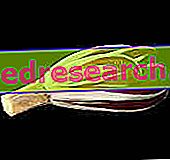Related articles: Favismo
Definition
Favism is the consequence of a gene defect that reduces the concentration of some enzymes essential for the good functionality of red blood cells. Within the erythrocytes of subjects affected by favism, therefore, there is a shortage of the aforementioned enzymes - called glucose-6-phosphate-dehydrogenase (G6PD), essential for metabolizing glucose, the energy fuel of erythrocytes. In the presence of this deficit, the ingestion of broad beans and other foods rich in nearby glycosides and convicina (such as peas) causes the destruction of red blood cells, with the consequent appearance of jaundice, anemia and renal dysfunction (until acute renal failure ), abdominal pain, nausea and vomiting. The symptoms of favism, therefore, are generally triggered by the ingestion of the aforementioned foods, but also by some drugs or infectious processes; outside these circumstances, favism is generally asymptomatic, therefore it does not cause significant symptoms. Only in cases of severe G6PD deficiency, given the numerous gene variants of the disease, are the haemolithic processes (rupture of red blood cells) present chronically or intermittently.
Most common symptoms and signs *
- Abdominal pain
- hemoglobinuria
- Jaundice
- Pallor
- splenomegaly
- Dark urine
Further indications
For the complete list of drugs to avoid to keep favism symptoms, we refer to the website of the Italian favism association. Still referring to the information material published by this source, we report, for completeness, the key symptoms of a haemolytic crisis:
- Sudden onset of fever and jaundice of the skin and mucous membranes.
- Urine-colored, yellow-orange urine.
- Pallor, weakness, impairment of general conditions.
- Frequent, difficult breathing.
- Pulse rapid, weak, little appreciable.



